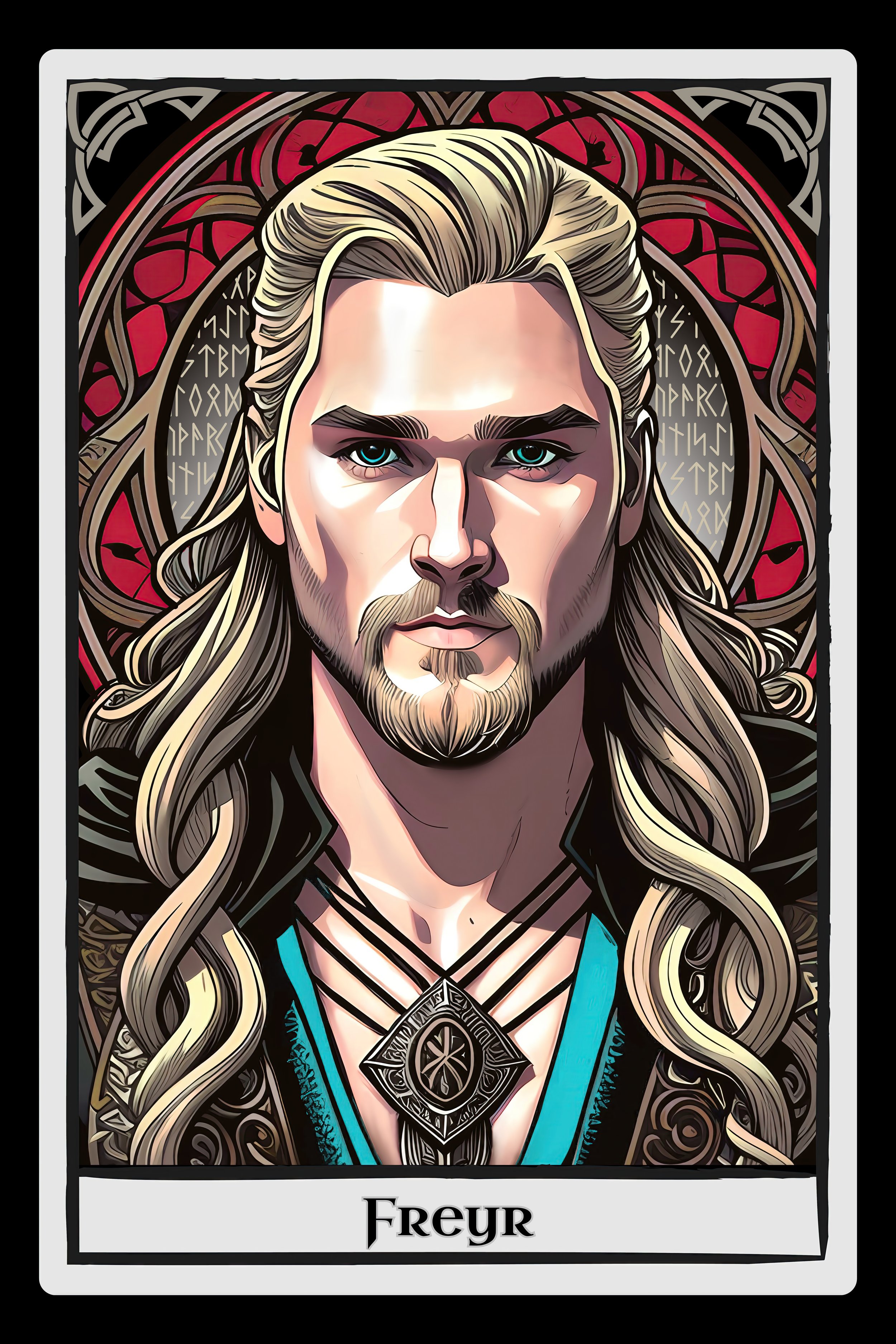Freyr: Benevolent God of Fertility, War, and Abundance
In the captivating tapestry of Norse mythology, Freyr emerges as a luminous figure, revered for his multifaceted dominion over fertility, war, and abundance. Adorned in resplendent colors of turquoise, red, and gold, Freyr's mythological legacy intertwines tales of divine power and cosmic influence. Through an exploration grounded in Norse myth, archaeological findings, and literary sources, we embark on a journey to unveil the enigmatic persona of Freyr, wielding his legendary sword, commanding reverence through the ages.
Freyr's Divine Essence and Iconography:
Freyr's essence radiates with the verdant hues of green and gold, symbolizing his dominion over fertility and prosperity. As the son of Njord, the sea god, Freyr embodies the cyclical rhythms of life and the vitality of the changing seasons. In the Eddic poem "Gylfaginning," Snorri Sturluson describes Freyr's divine attributes: "Freyr is the most renowned of the Æsir; he rules over the rain and the shining of the sun, and therewithal the fruitfulness of the earth." These words evoke the benevolent nature and boundless generosity that Freyr bestows upon the land and its inhabitants.
Freyr, THowell, Olensdottir
Connection to Phallic Symbolism:
Throughout Norse mythology and archaeological discoveries, Freyr's association with fertility is prominently depicted through phallic symbolism. Large phallic statues representing Freyr have been unearthed, showcasing his role as a deity of procreation and fecundity. These statues, often found in sacred sites and temples, serve as tangible expressions of reverence and devotion to Freyr's divine influence over the cycles of life and the continuation of the tribe.
Role as the God of War:
Despite his associations with fertility and abundance, Freyr possesses a martial aspect, embodying the duality of creation and destruction. In the "Skirnismal," an Eddic poem found within the Poetic Edda, Freyr's beloved sword, inscribed with runes of power, is described: "Lo there lieth Lævatein, / And around it flames leap high and blue; / And its name is known / To every son of Æsir." This mythical weapon, capable of fighting on its own, serves as a testament to Freyr's prowess as a warrior and protector of his realm.
Continued Worship and Reverence:
Despite the passage of centuries, the worship of Freyr endured among the Norse people, persisting through various cultural shifts and religious transitions. Offerings and rituals dedicated to Freyr continued to be practiced, particularly during times of sowing and harvest, as communities sought his favor for bountiful crops and abundant harvests. Even with the advent of Christianity and the subsequent conversion of Norse lands, elements of Freyr's worship persisted in folk traditions and cultural practices, a testament to the enduring legacy of this revered deity.
Freyr emerges as a figure of profound significance within Norse mythology, embodying the virtues of fertility, war, and abundance. Adorned in the vibrant colors of turquoise, red, and gold, Freyr's divine essence permeates the natural world and the hearts of his worshipers through the ages. From his legendary sword to the phallic symbols of fertility, Freyr's mythological legacy endures as a testament to the enduring power of reverence, devotion, and the cyclical rhythms of life.
